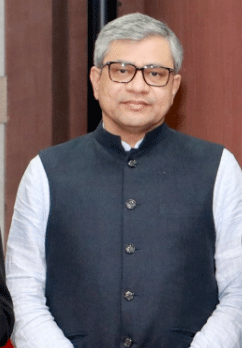Bhubaneswar: Revealing reason behind the tragic triple train accident at Bahanaga Bazar station for the first time, Union Railway Minister Ashwini Vaishnaw on Friday told Parliament that the accident took place due to the lapses in the signalling- circuit-alteration carried out at the North Signal Goomty of the station in the past.
In a written statement to Rajya Sabha, Shri Vaishnaw said the Commissioner of Railway Safety (CRS) has submitted its inquiry report and the cause of the accident.
“The rear-collision was due to the lapses in the signalling- circuit-alteration carried out at the North Signal Goomty (of the station) in the past, and during the execution of the signalling work related to replacement of electric lifting barrier for level crossing gate no. 94 at the station,” he said.
These lapses resulted in wrong signalling to the train No. 12841 (Coromandel Express) wherein the UP home signal indicated green aspect for run-through movement on the UP main line of the station, but the crossover connecting the UP main line to the UP loop line (crossover 17 A/B) was set to the UP loop line; the wrong signalling resulted in the train traversing on the UP loop line, and eventual rear-collision with the Goods train standing there, he said.
Informing about the past incidents that occurred at the same station, the Railway Minister said that there was no flaw in the Signalling system.
On Feb 8, 2023 the signalling ESM was attending the block proving axle counter of UP main line at Hosadurga station of South Western Railway.
The ESM and his assistant did not follow the laid down procedure, due to which an unusual condition was created. The train was to start from the common loop toward the UP main line. The unusual condition was detected by the Loco Pilot who informed the station master for corrective action. As a result, no untoward incident took place. However, there was no flaw in the signalling system.
Following the incident, as a safety measure, the Railway has carried out an intensive safety drive on staff counselling to adopt proper & laid down procedure while maintenance and attending signalling failures.
Concept of Rolling Block was introduced wherein work of maintenance/repair/replacement is planned for 2 weeks in advance on rolling basis and executed accordingly.
Intensive safety drive for verification of all relay room and outdoor location particulars for correctness with site and drawings is under progress over and above the regular safety inspections, he added.
In the unfortunate railway tragedy, 295 passengers lost their lives, 176 sustained grievous injuries, 451 suffered simple injuries and 180 received First Aid treatment and left, Shri Vaishnaw said while replying to another question asked by BJD MP Prashanta Nanda.
In the train accident 254 deceased persons have been identified and their bodies handed over; 41 deceased persons are yet to be identified. Mortal remains of unidentified passengers have been retained in medically prescribed ways at AIIMS, Bhubaneswar, he pointed out.
DNA samples have been taken for analysis at CFSL, New Delhi. DNA analysis reports are maintained which can be matched with DNA of claimants as and when they arrive. Action to pay last respects to deceased passengers is being taken as per law and in consultation with medical professionals and law enforcement agencies (GRP and CBI)
Till July 16, 2023, Rs.29.49 crore has been paid as enhanced ex-gratia @Rs. 10 Lakh to the next of kin of each deceased, @Rs. 2 Lakh each to the grievously injured and @Rs. 50,000 each to the passengers with simple injury.
In addition to this, Railways pays compensation to the next of kin of deceased or victims depending upon nature and type of injuries sustained.
Compensation is paid by the Railways as per decree passed by railway Claims Tribunal (RCT) on the compensation claims application filed by the victims or their dependent.


